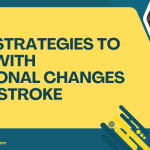Table of Contents
- Understanding the Impact of Stroke
- Effective Communication Strategies
- Encouraging Independence Through Daily Activities
- Physical and Emotional Support
- Promoting Social Engagement
Understanding the Impact of Stroke
A stroke can be a life-altering event, affecting not only the individual who experiences it but also their caregivers and loved ones. According to the American Stroke Association, strokes occur every 40 seconds in the United States, leading to various physical and cognitive challenges that require ongoing support.
Understanding the effects of stroke helps caregivers create a more empathetic and patient environment, enabling better recovery outcomes.
Common Effects of Stroke
- Physical Impairments: Weakness or paralysis on one side of the body, difficulty with coordination, and balance issues.
- Cognitive Challenges: Trouble with memory, problem-solving, and communication.
- Emotional Changes: Increased risk of depression, anxiety, and mood swings.
For insights into the long-term effects of stroke, explore Top 5 Long-Term Effects of Stroke on Brain Health.
Effective Communication Strategies
One of the primary challenges for stroke patients can be communication difficulties, which may result from language or speech impairments. Caregivers can play a vital role in facilitating communication.
Effective communication is a cornerstone of successful caregiving for stroke patients.
Tips for Effective Communication
- Be Patient: Give the patient ample time to express themselves. Avoid interrupting or finishing their sentences.
- Use Simple Language: Speak clearly and use simple, direct words. Avoid jargon and complicated sentences.
- Non-verbal Cues: Utilize gestures, facial expressions, and visual aids to support verbal communication.
- Active Listening: Show that you’re engaged by nodding and maintaining eye contact.
For more detailed strategies on communication with stroke patients, visit the National Institute of Neurological Disorders and Stroke.
Encouraging Independence Through Daily Activities
Empowering stroke patients to engage in daily activities can significantly boost their confidence and sense of independence. Caregivers can help by encouraging participation while providing necessary assistance.
Encouraging daily participation fosters a sense of accomplishment and enhances emotional well-being.
Ideas for Daily Activities
- Personal Care: Encourage participation in grooming and dressing. Use adaptive tools if necessary.
- Meal Preparation: Involve them in cooking or setting the table. Consider using easy-to-handle utensils.
- Household Chores: Assign simple tasks like organizing items or folding laundry to promote engagement.
Here’s a simple table outlining adaptive tools that can aid stroke patients in daily activities:
| Activity | Adaptive Tool | Purpose |
|---|---|---|
| Eating | Weighted utensils | Reduces hand tremors |
| Writing | Grip aids | Improves control and grip |
| Personal grooming | Electric razors | Simplifies shaving |
| Cooking | One-handed cutting tools | Makes food preparation easier |
For more about enhancing neuro care effectiveness through daily support, check out Top 5 Ways Caregivers Enhance Neuro Care Effectiveness.
Physical and Emotional Support
Physical rehabilitation is crucial for stroke recovery, but emotional support is equally important. Caregivers can provide a holistic approach that nurtures both physical and mental well-being.
A holistic approach to care nurtures both the body and the mind, maximizing recovery potential.
Providing Physical Support
- Exercise Routines: Collaborate with healthcare professionals to develop safe exercise plans tailored to the patient’s abilities. Gentle stretching or walking can improve mobility.
- Assistive Devices: Ensure the patient has access to mobility aids such as walkers or braces to enhance independence.
Emotional Support Strategies
- Active Listening: Let patients express their feelings and frustrations. Sometimes, just being there is enough.
- Encourage Group Therapy: Suggest participation in stroke support groups where patients can share experiences and coping strategies.
For more information about stroke recovery, check out Top 5 Essential Steps for Stroke Rehabilitation Success.
Promoting Social Engagement
Social isolation can be a significant issue for stroke survivors, leading to feelings of loneliness and depression. Caregivers can play an essential role in fostering social connections.
Fostering social connections is key to enhancing the quality of life for stroke survivors.
Ways to Encourage Social Interaction
- Organize Social Gatherings: Facilitate small get-togethers with friends or family to create a supportive environment.
- Community Activities: Research local events or classes that align with the patient’s interests, such as art or music therapy.
- Virtual Connections: Use technology to help them connect with loved ones through video calls or social media.
Benefits of Social Engagement
- Reduces feelings of isolation
- Encourages emotional expression
- Provides a sense of belonging and community
By prioritizing social engagement, caregivers help stroke patients reclaim their sense of identity and normalcy after a life-changing event. For further insights into the importance of social support post-stroke, refer to Top 5 Benefits of Family Support for Stroke Recovery.
Conclusion
Supporting stroke patients is a multifaceted journey that requires understanding, patience, and creativity. By implementing effective communication strategies, encouraging independence, providing emotional and physical support, and promoting social engagement, caregivers can empower stroke patients to lead fulfilling lives.
Your support can make a significant difference in their recovery and overall quality of life.
For more resources and information on caregiving for stroke patients, visit the National Stroke Association.






